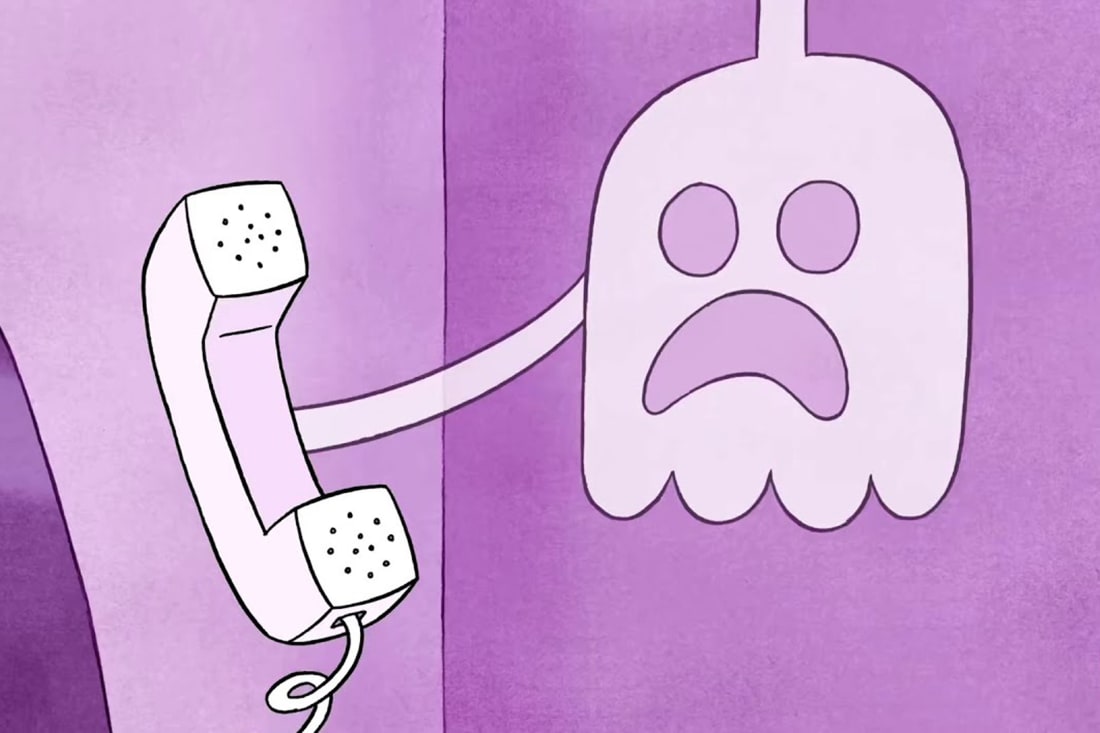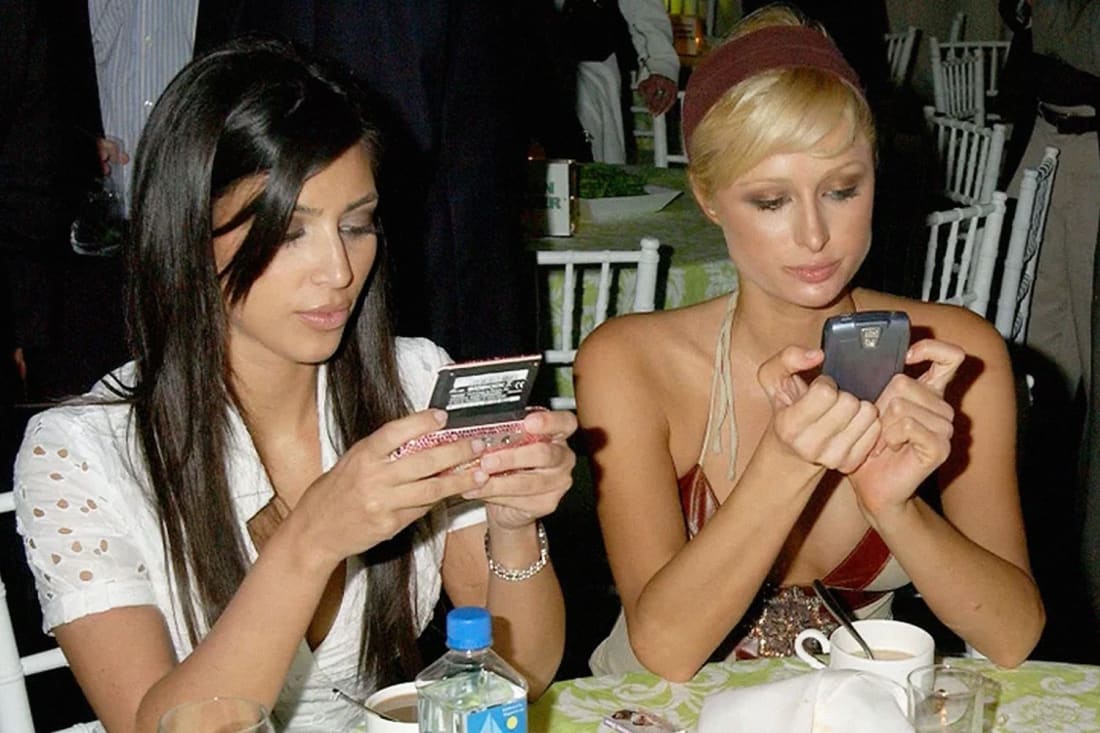Rejoice, the sex recession is over!
It depends who you ask but, for many, the idea that nobody is having sex is as outdated as Airpods
It depends who you ask but, for many, the idea that nobody is having sex is as outdated as Airpods
Hiya shaggers. I'm Megan, and for the past five years I've written about all things sex and relationships: heading to sex parties, reviewing dildos and navigating non-monogamy to find out what's new and exciting in the world of the sexually delighting. Every month, I'm coming to you with sexpert advice: my picks of the best ~sexual wellness~ bits from the world of woo, the science of sex and my (sometimes unhinged) musings from the dating wilderness. Today, we're talking about what “counts” as sex, cock rings and how to break a dick, according to TikTok…
If you’re a sex writer like me, you can’t seem to go five minutes without hearing that no-one’s having sex anymore. Yep, we're frequently told that we’re in a “sex recession” - a term that was popularised in a 2018 The Atlantic article that argued that young people, in particular, were having less sex.
Then, we were hit with a flurry of studies and surveys which seemed to back this argument up - or, at least, grabbed onto the idea of a sex recession and never let go. We were told that we were witnessing “the death of the one night stand” after only 8% of people in a Match.com survey admitted to having hooked up with someone for one night only. Claims were made that teenagers were actually focussed on their studies - and not, you know, getting busy - after The Institute for Family Studies found that between 1991 and 2017, the number of US high school students having sex dropped from 54% to 40%. And that was before the pandemic, when hookups with randoms were effectively criminalised.
On the internet, there seemed to be a movement away from sex and dating, too. Girls, gays and theys on TikTok started exploring forms of spirituality-adjacent celibacy. Fed-up hetero women everywhere started posted drawn-out diatribes against dating app culture - and heterosexuality, generally - on social media platforms everywhere. Meanwhile cis guys on Reddit decided that not ejaculating would make them better gym bros.
woo presents: life In love
Obviously, it’s great that individuals have been able to find ways to explore forms of abstinence - not least because it removes the societal stigma around those who don’t have sex for a many reasons including religious observance, not feeling ready and being on the asexual spectrum so not experiencing desire in the way that society deems as “normal”.
Despite these individual online trends, the concept of a sex recession seems greatly overstated. I’m sure I’m not the only one to have noticed, among my own circle, the rise of polyamory, sex parties and exploratory apps like Feeld. These once fringe activities are now very much mainstream. Post-pandemic, the idea that nobody is having sex anymore just doesn’t ring true - and the statistics back this hunch up, too.
Researchers concede there was definitely a sex recession in the dark, dark days of 2018 and 2019 and - ofc - during the pandemic. But, in the US, levels of sexual activity in 2022 reached highs not seen for 25 years. In the UK, official Government statistics showed that STI diagnoses in England increased by 23.8% between 2021 and 2022 - with gonorrhoea in particular spiking by 50.3% overall and rising most noticeably in the 15 to 24 demographic.
Are we having sex less? Or have we changed how we have sex?
In short, it seems like people were doing plenty of shagging in 2022. But just because we seem to be returning to pre-pandemic, pre-sex recession levels of sex stuff obscures the learnings we should have been able to take away from the sexual downturn.
Namely, data about sexual behaviour from the late 2010s seemed to suggest that teenagers were waiting until they were older to have sex for the first time and that the appetite for standalone sex encounters (as opposed to, say, a repeated friends-with-benefits situation) had declined. What if it wasn’t that people were having less sex? What if people were just having sex in different ways?
After all, the pandemic encouraged us all to get creative with sexting, sex on cam and a whole other range of ways to rid ourselves of horniness without breaching lockdown rules. If sex via a computer screen can be sex, it’s a reminder that what we define as “sex” is contextual, not innate.
According to Ness Cooper, a therapist and the resident sexologist for sex toy brand Je Joue, we’ve already seen a major overhaul to what we think sex is. In modern times, this came after the repeal of Section 28, which banned the discussion of all things LGBTQIA+ in schools.
“Traditionally many people within western society are taught that sex is when someone with a vagina is penetrated by a penis, often for reproductive reasons,” Cooper explains. “There used to also be a big focus on sex and ejaculation. As a result, in sexual situations where a cis-male individual didn’t ejaculate ,it wouldn’t be classed as “proper” sex. It wasn’t until after Section 28 ending that many learned of other forms of sex and sexual pleasure from sex education in schools.”
If social ideas of sex have already shifted from being about procreation to being about pleasure, maybe we’re in the midst of a sexual vibe shift of our own - from sex being one-size-fits-all to a more open-ended, personal approach to sex. As Cooper concludes, we can only hope that this is where things are headed; “Limiting sex to only being one way can make it hard for individuals to communicate with their partner(s) about the types of stimulation they enjoy or don’t enjoy.”


Letting us into the details of a week in their sex life is a 25-year-old who’s exploring kink parties and long distance romance with his polyamorous partner. Here's a little sneak peek below...
At the sex party, we end up on the red leather sofas in a room with a St. Andrew’s Cross. I straddle them and we let our hands wander over each other. I’m more on edge than I want to be, because this feels hot but also vulnerable. We grab the toys we need for the scene and they cuff me to the cross.
They ask me to pick a number, and then they deliver that number: six hits with their leather strap. Three kisses. Twenty seconds of tickling until I thrash and shriek. Nine pressure points they push down on to make me moan. Seven seconds of them pinching my arse, the pain getting more and more intense. I’m completely at their mercy, and by making me choose a number, they make me complicit in my own torment. It’s playful and fun but it’s also very hot, especially when they pretend to lose count and start over.
Part of me wants it to go on forever, but the cuffs aren’t quite the right size, so my hands start tingling, and my legs ache from holding me up. We finish the scene with them asking me to pick a number between 99 and 100, and then subjecting me to a torturous 99 seconds of tickling while I giggled manically and tried to squirm away from them. When they uncuff me, I collapse on to the red leather sofas while they gather our items together. We head to one of the aftercare rooms and climb up onto the bed. When I roll over to my side, they spoon me without me asking them to.
Read the full, unfiltered sex story full of impact play, aftercare and long distance dirty talk here.

If you happen to frequent the sexier (sorry, seggsier) side of TikTok, then you’ll no doubt have seen the viral video claiming to unveil what the world’s most dangerous sex position is. And, yep, we’ve got some thoughts.
If you haven’t seen the aforementioned video, here’s your quick catch-up. Created by NHS surgeon and popular medical advice TikToker Dr Karan Raj back in October 2021, the clip claims that reverse cowgirl (where the receptive partner straddles their sexual partner, with their torso facing the other person’s feet) is the riskiest sex position. And, thanks to the unpredictability of the TikTok algorithm, the video has resurfaced in the past week. But do the facts still back up Raj’s claims, almost two years later?
So, what’s the reason reverse cowgirl is so dangerous? Well, apparently it’s not because of whiplash or sprains - Raj argues that the position is at the root of 50 percent of penile fractures, due to the way that the penis may slip out during sex and become “crushed” against the pubic bone.
Interesting, right? But, as it turns out, some research isn’t in agreement with Raj’s claims. Specifically, a 2017 study published in The International Journal of Impotence Research claimed that doggy style (where the receptive partner is being penetrated from behind while on all fours, while the penetrative partner kneels) was the riskiest sex position and amounted for 41% of penile fractures.
And while both this study and Raj’s TikTok video primarily focus on the cis-heterosexual context and use correspondingly gendered language, it’s important to keep in mind that the info is relevant for anyone that has penis-in-vagina sex - which may include non-binary and trans people in any number of relationship configurations.
But it’s not just fans of P-in-V who should take care. A 2018 study which focussed on a cisgendered, MSM (men who have sex with men) control group and was published in The Official Journal of the Brazilian Society of Urology, argued that anal doggy style was the cause of all incidences of penile fractures.
But what even is a penile fracture? And how do we know it’s happened?
Penis fractures…yes, they’re a thing
The penis obviously does not contain any bones (duh!) so when we talk about a dick fracture, it’s really not the same as fracturing your elbow.
Instead, a penile fracture describes a scenario when an erect penis receives force trauma - it could be whacking against a pubic bone really hard or when the receptive partner accidentally lands their entire weight on the dick while they’re on top.
In terms of what’s going on in there, a penile fracture is when the two cylinders made of spongy tissue within the penis (the corpora cavernosa) become engorged with blood - an erection - and any sudden, forceful impact could lead to a rupture in the outer lining (the tunica albuginea) of either of these cylinders.
And, yes, it is as painful as it sounds! All of this may lead to acute swelling, pain, a cracking or popping sound, very sudden erection loss and the penis turning a shade of purple - yes, like the aubergine emoji - due to bleeding under the skin.
A penile fracture normally requires urgent medical attention and can lead to persistent erectile dysfunction in future if not treated - so take care, and maybe don’t thrust so hard!
Sex injuries for people with vulvas and receptive partners
Admittedly, penile fractures sound…not great! However, it’s important to remember that it’s not just people with penises - or the people doing the penetrating (which includes muscle strains for those who strap) - who are at risk of sex injuries.
Penetrative sex - particularly when the penetrated area is dry due to lube not being used, or during “rough” sex - can lead to vaginal or anal tears. This is why investing in a good water-based lubricant (meaning it is condom and sex toy-compatible) is key. Other ways to avoid tears include opting for positions where the receptive partner has greater control of the movements and angle of the strap-on/penis - such as when the receptive partner is on top.
The severity of tears or cuts can differ significantly - sometimes you might not notice them - but, on other occasions, you may experience discomfort, pain and bleeding. Experts recommend you abstain from sexual activity until vaginal tears or cuts fully healed and ensure that you seek medical attention if the bleeding is severe or doesn’t stop, and if the pain is unbearable after over-the-counter pain treatment
In order to avoid injury during rough sex, in particular vaginal or anal cuts or tears, it’s important to use lube (as you would in any other sexual activity). For avoiding other types of injury - whether that’s bruises, back pain or cuts to the rest of your body - It’s crucial to use a safe word. A safe word is a word which, when said by anyone involved, leads to all partners immediately stopping sexual activity. In addition to standalone safe words, you can use the traffic light system: saying “red” means stop, “yellow” means proceed with caution, and “green” is an enthusiastic yes. While rough sex is often presented as spontaneous, safe words and ground rules should be negotiated in advance and deployed whenever things begin to hurt or to avoid any individual’s comfort being compromised.
Another common sexual risk for people with vulvas is urinary tract infections: an infection of the bladder, kidneys or the tubes connecting these organs. UTIs are caused by bacteria from the skin or rectum getting lodged in the urinary tract.
Women and trans and non-binary people with a gynaecological system are more likely to contract UTIs because their urethra (the tube you pass urine through) is shorter than that of people with penises, and located closer to the anus. Penetrative sex and oral sex can increase the risk of UTIs as thrusting and rubbing can move bacteria into the urethra and then onto the bladder.
While there is a vaccine in the works for persistent UTIs, there are some measures which can be taken to help prevent UTIs after sex - though please note that these may not always work for those who are prone to this type of infection.
These measures include urinating directly after sex to flush out the urethra, changing condoms (or introducing a condom) if moving to vaginal penetration after anal penetration, wiping the genitals from front to back after sex and being sure (once again!) to use lube during sex, ensuring that the lubricant you use is pH-balanced and does not include spermicide.



